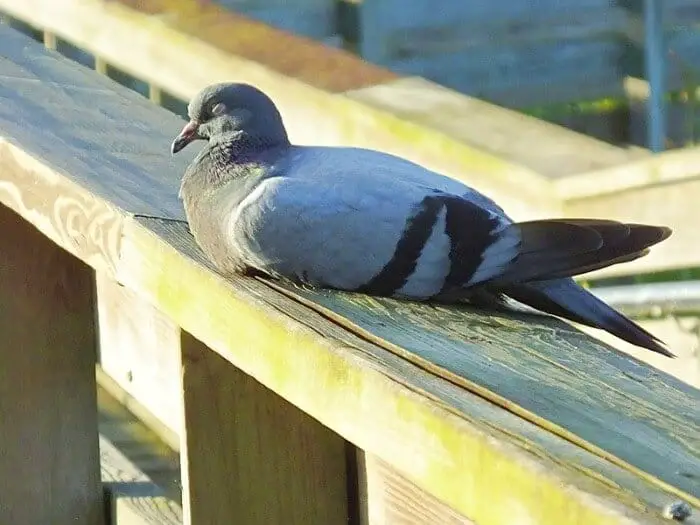England is home to an estimated 18 million feral/wood pigeons. A mating pair can breed up to six times within a year.

Below are some of the UK’s most common types of pigeons:
1. Wood Pigeon
The wood pigeon is the most commonly found pigeon in the UK.
They can be identified through their majority grey coloring with white neck patches and white patches on the wings.
Domesticated or feral, their blue neck and loud wing flaps during their flying make them easily identifiable.

Technically noted as vermin requiring pest control in public places and buildings where they can gain access.
These pigeons are common in inner cities and towns where they live off scraps and waste left behind by u humans.
Rock Dove
The Rock Dove was domesticated to provide food long ago.

Some bluer, some pale grey and others an unusual shade of dull brick-red or cinnamon-brown.
In cities and towns throughout the UK they are an extremely common sight.
Stock Dove
Often compared to rock doves due to their size and plumage, these are largely blue-grey with a bottle green band on the back of the neck and a pink chest.
They show black edges to the wing in flight and two partial black bands near their back.

Widely distributed in the UK, except for parts of northern Scotland and Ireland, with particularly high densities in the English Midlands and Southwest.
Over half their European population is found in the UK.
King Pigeon
Bred to provide us with food, King Pigeons are among the largest species of pigeon.
A king pigeon’s size and excessive breeding cause genetic problems which make it difficult to fly.

The king pigeon is one of the most popular pets because it is docile and easy to care for.
Racing Pigeons
A homing or racing pigeon has an inbuilt homing system. This allows it to remember and return to its original home despite traveling long distances.

It is not uncommon to find racing pigeons with one color. Racing pigeons are bred for racing and are usually domesticated.
This article was written for Pigeonpedia by Lee Saint’ from VioVet.
